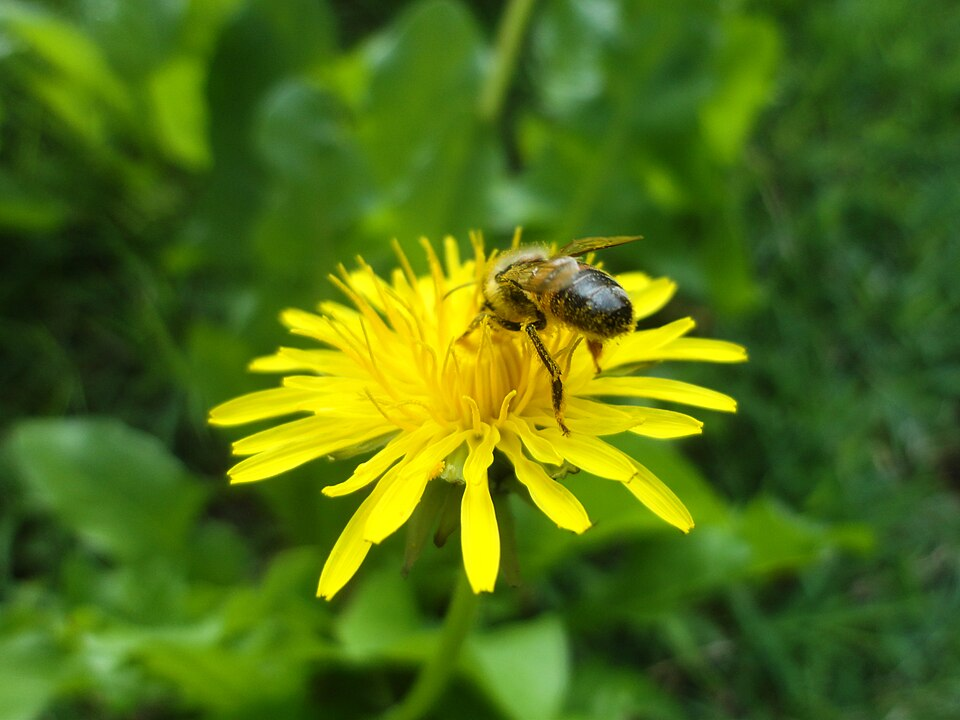OCR Specification focus:
‘Explain ecological (e.g., keystone species, genetic resource), economic (e.g., reduced soil depletion), and aesthetic reasons for maintaining biodiversity.’
Biodiversity maintenance ensures the stability, resilience, and productivity of ecosystems while supporting essential resources, economic sustainability, and aesthetic value crucial for both human well-being and planetary health.
The Importance of Maintaining Biodiversity
Biodiversity refers to the variety of living organisms within ecosystems, between species, and at genetic levels. It underpins essential ecological processes, contributes to human economies, and enriches cultural and aesthetic experiences. The maintenance of biodiversity is therefore essential for environmental balance, continued evolution, and the survival of countless species, including humans.
Ecological Reasons for Maintaining Biodiversity
Ecosystem Stability and Interdependence
Each species within an ecosystem has a specific ecological niche, a role that contributes to the system’s overall balance. High biodiversity ensures that if one species is lost, others can compensate, maintaining ecosystem functionality.
Keystone species: A species that exerts a disproportionate effect on its ecosystem relative to its abundance; its removal can cause ecosystem collapse.
Keystone species have a disproportionately large effect on community structure relative to their abundance.

This diagram shows the keystone in an arch — the wedge-shaped block that locks the structure. In ecology, a keystone species plays a similarly essential role in maintaining community structure. The image is a neutral architecture analogy; it does not depict a biological species. Source.
Examples of keystone species include:
Beavers, which create wetlands that support numerous other organisms.
Starfish, which regulate prey populations, maintaining balance in marine ecosystems.
When keystone species are lost, ecosystem structure and function often deteriorate rapidly.
Genetic Resources
Genetic diversity within species provides the raw material for natural selection and adaptation. Populations with greater genetic variation can adapt more readily to environmental change or disease.
Wild relatives of crops, for instance, provide genes for disease resistance or drought tolerance that can be incorporated into cultivated varieties.
Genetic resources are critical for biotechnology, medicine, and agricultural breeding programmes.
Ecosystem Services
Ecosystems perform natural processes that benefit humans, known as ecosystem services. These include:
Pollination of crops by insects such as bees.
Water purification by wetlands filtering pollutants.
Soil formation and nutrient cycling by decomposers.
Climate regulation through carbon sequestration by forests and oceans.
When biodiversity declines, the reliability and efficiency of these services diminish, potentially leading to environmental crises such as reduced crop yields or water shortages.
Economic Reasons for Maintaining Biodiversity
Biodiversity directly supports economies at both local and global scales. Many industries rely on biological resources, and the loss of biodiversity can have profound financial implications.
Agriculture and Soil Health
Monocultures—large-scale planting of a single crop species—may be economically efficient in the short term but can cause soil depletion, loss of nutrients, and increased vulnerability to pests.
Maintaining diverse crop rotations and natural ecosystems helps:
Improve soil fertility through varied organic inputs.
Reduce reliance on chemical fertilisers and pesticides.
Prevent soil erosion by maintaining plant root networks.
Pharmaceuticals and Biotechnological Resources
A significant proportion of medicines are derived from natural sources. For example:
The rosy periwinkle produces alkaloids used in treating childhood leukaemia.
Many antibiotics originate from fungi or bacteria.
Losing species before their properties are studied represents a loss of potential resources for future drug discovery and technological innovation.
Ecotourism and Sustainable Use
Biodiversity-rich environments attract visitors, creating jobs and generating income for local communities. Examples include safari parks, coral reefs, and rainforests.
However, for tourism to remain sustainable, activities must avoid harming the very ecosystems they depend on.
Pollinators such as bees underpin crop yields and wild-plant reproduction, exemplifying how biodiversity safeguards ecosystem services that human economies rely on.

A honeybee (Apis mellifera) collects nectar and pollen from common dandelion (Taraxacum officinale). Pollination is a key ecosystem service linking biodiversity to food production and farm incomes. The scientific names are included to reinforce accurate biological context. Source.
Economic stability also depends on biodiversity’s role in supporting fisheries, forestry, and agriculture, which provide food, raw materials, and employment worldwide.
Aesthetic and Cultural Reasons for Maintaining Biodiversity
Human Well-being and Inspiration
Natural environments contribute significantly to human physical and psychological well-being. The aesthetic value of biodiversity—the beauty of landscapes, the diversity of colours and forms, and the sounds of wildlife—has measurable effects on mental health and creativity.
Cultural and spiritual traditions often centre around nature, with many societies considering specific species or habitats sacred or symbolic. For instance:
Cherry blossoms in Japan symbolise renewal and impermanence.
Elephants in various cultures represent wisdom and strength.
Protecting biodiversity therefore also means preserving cultural heritage and human identity.
Education and Scientific Research
Diverse ecosystems offer opportunities for scientific study and environmental education. Understanding the interactions between species helps researchers:
Predict responses to climate change.
Develop sustainable management practices.
Discover new materials or biochemical compounds with industrial or medical uses.
Interconnectedness of Reasons
The ecological, economic, and aesthetic reasons for maintaining biodiversity are deeply interconnected:
The loss of ecological stability can lead to economic loss, such as decreased agricultural productivity.
The degradation of natural beauty can reduce tourism income and diminish cultural richness.
The loss of genetic diversity threatens future resource availability and adaptation potential.
Maintaining biodiversity is not simply about protecting individual species—it is about safeguarding the interdependent web of life that sustains all organisms on Earth.
Consequences of Failing to Maintain Biodiversity
When biodiversity declines, ecosystems lose resilience. This can lead to:
Habitat degradation and extinction cascades where multiple species vanish.
Reduced ecosystem services, affecting food, water, and air quality.
Economic instability, particularly in developing regions reliant on natural resources.
Cultural loss, as environments that inspire art, religion, and identity disappear.
Preserving biodiversity therefore ensures environmental sustainability, economic security, and human fulfilment—values that collectively underscore why biodiversity must be maintained for current and future generations.
FAQ
Ecosystem stability refers to how consistently an ecosystem maintains its structure and function over time despite small disturbances.
Resilience, however, is the ability of an ecosystem to recover after a major disturbance such as fire, drought, or human activity.
High biodiversity enhances both stability and resilience because species perform overlapping ecological roles, allowing the ecosystem to continue functioning even when one species is lost or stressed.
Biodiverse ecosystems regulate climate through several interconnected processes:
Forests and oceans act as carbon sinks, absorbing atmospheric carbon dioxide.
Vegetation cover reduces temperature extremes and soil erosion.
Wetlands and peatlands trap greenhouse gases and stabilise local microclimates.
When biodiversity declines, these natural regulatory mechanisms weaken, accelerating climate change and increasing environmental variability.
Genetic diversity provides the raw material for adaptation and evolution. It enables populations to survive diseases, changing temperatures, or habitat alterations.
In conservation, maintaining genetic diversity helps prevent inbreeding depression, which can reduce fertility and survival rates. This is particularly important in small or isolated populations such as zoo animals, endangered species, and pedigree livestock.
Monocultures involve growing a single crop species over large areas. This practice reduces habitat diversity and eliminates ecological niches for other organisms.
Consequences include:
Depleted soil nutrients due to repeated extraction by one crop type.
Increased vulnerability to pests and diseases.
Greater dependence on chemical fertilisers and pesticides.
In contrast, crop rotation and polyculture farming systems help maintain soil health and encourage beneficial species interactions.
Cultural biodiversity—the diversity of human traditions, knowledge, and practices—can promote biological conservation. Many Indigenous and local communities manage land sustainably using traditional ecological knowledge.
Examples include:
Sacred groves or protected forests that act as natural reserves.
Rotational farming and fishing practices that prevent overexploitation.
By preserving cultural diversity, societies often help maintain the ecosystems they depend upon, linking human heritage directly to biodiversity conservation.
Practice Questions
Question 1 (2 marks)
Explain what is meant by a keystone species and describe one example of its role in maintaining biodiversity within an ecosystem.
Mark Scheme:
1 mark: Correct definition of keystone species – a species that has a disproportionately large effect on its environment relative to its abundance.
1 mark: Appropriate example given with clear ecological role, e.g. beavers creating wetlands that support many species, or starfish controlling mussel populations to maintain species balance.
Question 2 (5 marks)
Discuss the ecological, economic and aesthetic reasons for maintaining biodiversity. Include examples to support your answer.
Mark Scheme:
1 mark: Ecological reason – biodiversity maintains ecosystem stability and resilience; mention of interdependence or keystone species.
1 mark: Reference to genetic diversity as a resource for adaptation, crop breeding, or medicine.
1 mark: Economic reason – biodiversity supports industries such as agriculture, pharmaceuticals, or ecotourism; may include soil fertility, pollination or reduced soil depletion.
1 mark: Aesthetic reason – biodiversity provides beauty, recreation, or cultural and spiritual inspiration; contributes to mental well-being.
1 mark: Use of examples to illustrate at least two points clearly (e.g. bees for pollination, rosy periwinkle for medicine, forests for recreation).

